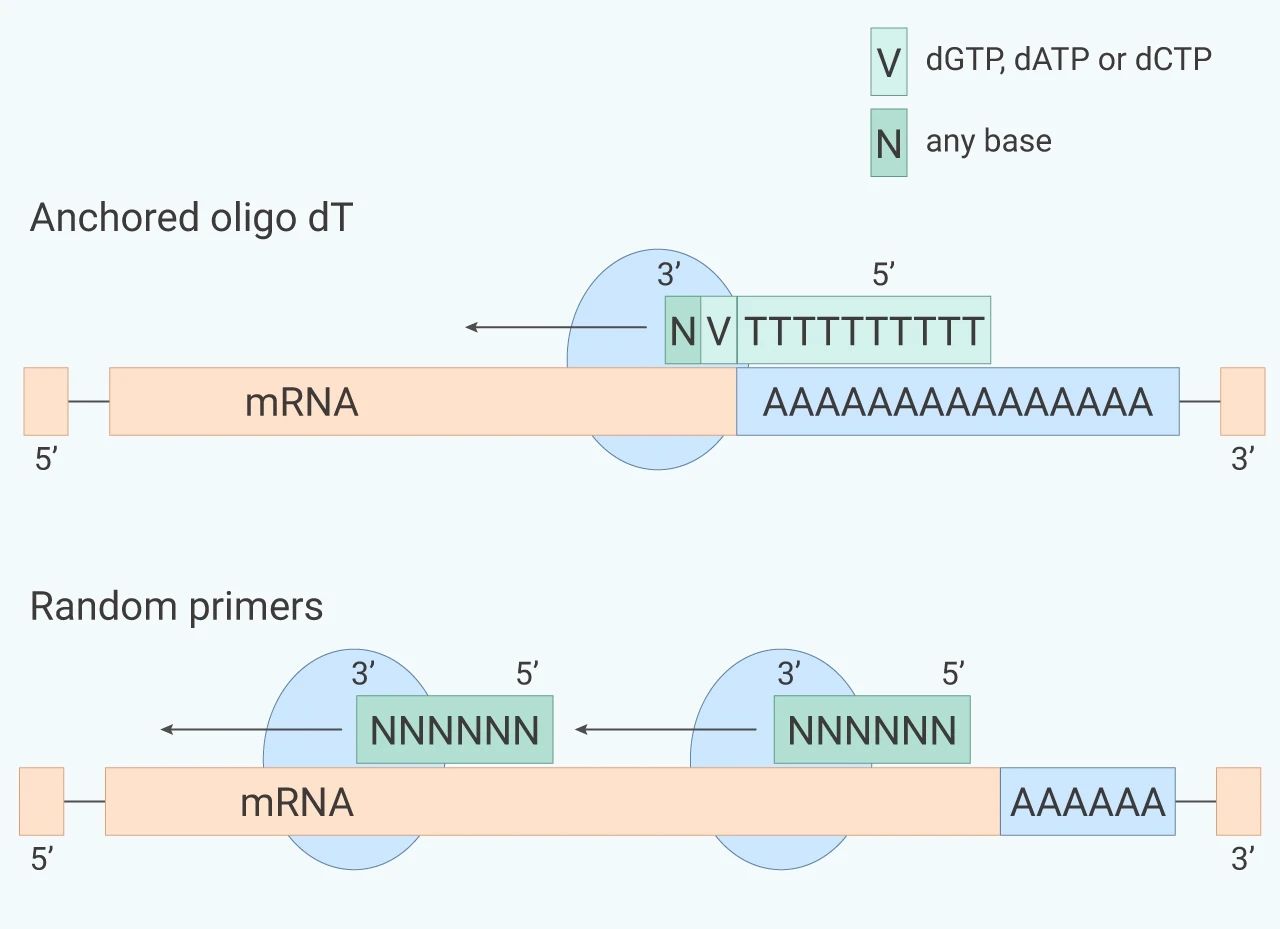Precautions for RNA reverse transcription experiments
Reverse transcription experiments are very common experiments in biological research and production. This article will describe precautions in RNA reverse transcription experiments.
1. Prevent the degradation of RNA templates
Undoubtedly, RNA quality has an important impact on the outcome of cDNA synthesis. But RNA is fragile and prone to degradation. In order to ensure the integrity of the RNA, we need to be careful and careful, such as operating on ice, reducing the operating time, etc. Adding inhibitors to the reaction system can also effectively prevent RNA degradation.
Also, it is recommended to check the quality of the RNA bands by agarose gel electrophoresis before reverse transcription. Usually intact eukaryotic RNA should include 28S and 18S bands, and the intensity of 28S band is generally about twice that of 18S.

2. RNA quantification
In addition to grasping the integrity of the RNA, the RNA concentration needs to be determined before reverse transcription. Generally, reverse transcription kits have requirements on the amount of sample loaded, and it is recommended that the amount of total RNA to be loaded is less than 5μg. Exceeding this range will cause bias in reverse transcription products (genes with high expression abundance are preferentially reverse transcribed), resulting in inaccurate quantitative results.
3. Removal of genomic DNA contamination
Residual genomic DNA (gDNA) will greatly interfere with the fluorescence quantitative results. In order to make the results more realistic and reproducible, we need to remove the gDNA interference. We can avoid gDNA amplification during primer design, such as setting upstream and downstream primers on different exons; or using DNaseI to remove gDNA after RNA extraction.
4. Choose suitable primers
Both OligodT primers and random primers can perform reverse transcription. OligodT primers can only bind to the poly(A) at the 3' end of mRNA, without the interference of rRNA and tRNA, and have strong specificity. However, it has higher requirements on the integrity and secondary structure of RNA, and is not suitable for prokaryotes. Random primers can bind to almost any RNA, including mRNA, tRNA, and rRNA, depending on the base. However, the fragments generated by reverse transcription by random primer method are small, and it is difficult to obtain cDNA of full-length transcripts.
5. Thermal stability of reverse transcriptase
Reverse transcriptase plays a key role in the entire reverse transcription system. In addition to activity, the thermostability of reverse transcriptase is also important. Reverse transcription at higher temperatures can reduce the secondary structure of RNA and increase the efficiency of reverse transcription. The wild-type M-MLV reverse transcriptase is very "heat-resistant", and its stability is greatly reduced when the temperature is higher than 37 °C.
Reverse Transcriptase manufacturers and suppliers
GENETURE is a group company focused on clinical diagnostics and life sciences. We have two factories. Provide the core ofReverse Transcriptase, including nucleic acid extraction kits, nucleic acid extractors, magnetic beads, PCR kits, PCR systems and other products and services. Our company has passed ISO9001 and ISO13485 certifications, and reagents and instruments have obtained CE and FDA certifications.
Just tell us your needs, we will provide solutions, provide you with strong market backing, and rely on strong production capacity and strict quality control to serve customers.
Email: info@geneture.com
Mobile: +86 150 1002 8687
